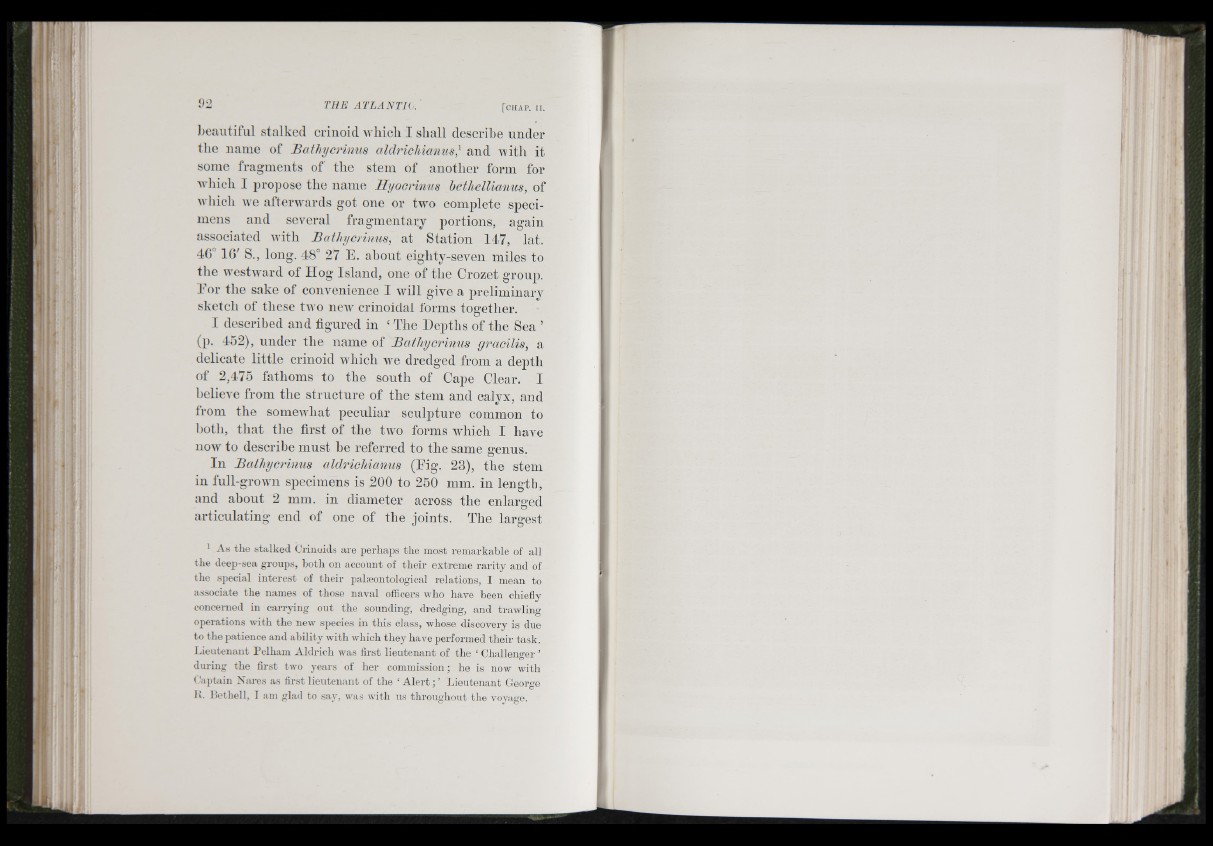
])eaiitiful stalked crinoid wliicli I shall describe under
tbe name of Bathycrinus aldrichianus^ and Avitli it
some fragments of the stem of another form for
Avbich I pro])ose the name Ilyocrinus hethelliamis, of
whicli we aftei’AA'ards got one or tAA’o complete specimens
and several fragmentary portions, again
associated with Bathycrinus, at Station 147, lat.
4G° 10' S., long. 48° 27 E. about eighty-seven miles to
the wcstAvard of Hog Island, one of the Crozet group.
Eor the sake of convenience 1 Avill give a preliminary
sketch of these tAvo ncAV crinoidal forms together.
1 described and figured in ‘ The Depths of the Sea ’
(p. 452), under the name of Bathycrinus gracilis, a
delicate little crinoid Avliich atc dredged from a depth
of 2,475 fathoms to the south of Cape Clear. 1
believe from the structure of the stem and calyx, and
from the someAAhat peculiar sculpture common to
both, th a t the first of the tAvo forms Avhich 1 have
iiOAV to describe must be referred to the same genus.
In Bathycrinus aldrichianus (Eig. 23), the stem
in full-groAvn specimens is 200 to 250 mm. in length,
and about 2 mm. in diameter across the enlarged
articulating end of one of tbe joints. The largest
^ As the stalked Crinuids are perhaps the most remarkable of all
the deep-sea groups, both on account of their extreme ra rity and of
the special interest of their paheontological relations, I mean to
associate the names of those naval officers who have been chiefly
concerned in can-ying out the sounding, di'edging, and trawling
oi>erations with the new species in this class, whose discovery is due
to the patience and ability with which they have performed th eir task.
J.ieutenant Pelham Aldrich was first lieutenant of the ‘ Challenger ’
during the first two years of her commission; he is now with
Captain Nares as first lieutenant of the ‘A l e r t ; ’ Lieutenant George
Ii. Pethell, I am glad to say, was with us throughout tlie voyage.